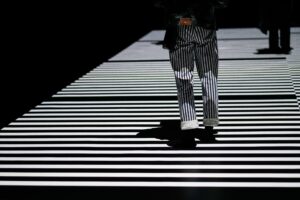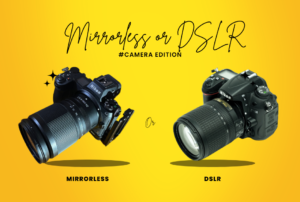Hey there, fellow photography enthusiasts! Today, I want to talk about one of my favorite techniques in photography – shallow depth of field. It’s a simple yet effective way to add depth and dimension to your photos, and it’s also a great way to isolate your subject from its surroundings.
Shallow depth of field is a popular technique used by photographers across all genres, from portrait and wedding photographers to landscape and wildlife photographers. It’s a great way to add an extra element of interest to your photos and to make your subject stand out from its surroundings. By mastering shallow depth of field, you can take your photography to the next level and create images that really grab the viewer’s attention.
In this blog post, I’m going to dive deep into the world of shallow depth of field photography. We’ll explore what it is, how to achieve it, and why it’s such an effective tool in your photography arsenal. I’ll also share some tips and tricks to help you get the most out of your shallow depth of field shots, whether you’re a beginner or a seasoned pro.
So, whether you’re looking to take stunning portraits, capture breathtaking landscapes, or simply want to experiment with a new technique, you’re in the right place. By the end of this post, you’ll have all the knowledge and skills you need to start using shallow depth of field in your own photography and take your images to the next level. So, grab your camera, and let’s get started!
What is Shallow Depth of Field Photography?
Shallow depth of field refers to the area of your photo that is in focus, with the rest of the image appearing blurred or out of focus. This technique is achieved by using a wide aperture (low f-number) on your camera, which creates a shallow depth of field and separates your subject from its surroundings.
Why Use Shallow Depth of Field?
There are many reasons why you might want to use shallow depth of field in your photography. First and foremost, it can help you to create a more visually interesting image. By blurring out the background or foreground, you can draw attention to your subject and make it stand out more.
Shallow depth of field can also help you to convey a sense of depth and dimension in your photos. By blurring out the background, you can create a sense of distance between your subject and the surrounding environment. This can help to give your photos a more three-dimensional feel.
How to Achieve Shallow Depth of Field
To achieve shallow depth of field, you’ll need to use a camera with manual controls, such as a DSLR or mirrorless camera. Start by setting your camera to aperture priority mode, which allows you to control the aperture while the camera adjusts the shutter speed.
Next, set your aperture to a low f-number, such as f/2.8 or f/1.8. The lower the f-number, the shallower your depth of field will be. However, be careful not to set your aperture too low, as this can cause your subject to be too blurry.
Finally, focus on your subject and take your shot. You should see that your subject is in focus, while the background or foreground appears blurred.
Tips for Using Shallow Depth of Field
Here are a few tips to keep in mind when using shallow depth of field:
1. Use a fast lens
ne of the best ways to achieve a shallow depth of field is to use a fast lens, which is a lens that has a wide maximum aperture, such as f/1.8 or f/1.4. A fast lens allows more light into the camera, which in turn allows for a faster shutter speed and a shallower depth of field. This is because a wider aperture creates a narrower plane of focus, keeping the subject in sharp focus while the background and foreground become blurred.
When using a fast lens, it’s important to pay attention to the distance between the camera and the subject. The closer you are to your subject, the shallower your depth of field will be. This means you’ll need to be careful to focus on the right part of your subject, such as the eyes in a portrait. Additionally, when shooting at wide apertures, it’s important to be aware of any lens aberrations or distortions that may occur. Some lenses may produce vignetting or softness at the edges of the frame when used at wide apertures, so it’s important to experiment with different settings and lenses to find the best combination for your desired effect.
By using a fast lens, you can achieve a beautiful, creamy bokeh effect and make your subject stand out from its surroundings. Whether you’re shooting portraits, landscapes, or anything in between, mastering the use of a fast lens can be a game-changer for your photography. So, don’t be afraid to experiment and see what kind of creative results you can achieve with a shallow depth of field and a fast lens.
2. Choose your focus point carefully
When using shallow depth of field, it’s crucial to choose your focus point carefully. This means selecting a specific part of your subject to focus on and ensuring it’s in sharp focus. For portraits, this might mean focusing on the subject’s eyes or face, while for landscapes, you may want to focus on a specific element, such as a tree or rock formation. Choosing the right focus point can help draw the viewer’s eye to the most important part of the image and create a sense of depth and dimensionality.
In addition to selecting the right focus point, it’s also important to consider the aperture setting you’re using. A wider aperture (smaller f-number) will result in a shallower depth of field, which means your focus point will be even more important. If you’re shooting at f/1.8, for example, you’ll need to be extremely precise with your focus point to ensure that it’s in sharp focus. On the other hand, if you’re shooting at f/4 or f/5.6, you’ll have a bit more leeway in terms of your focus point.
By carefully choosing your focus point and adjusting your aperture settings accordingly, you can create stunning images with shallow depth of field that really stand out from the crowd. Whether you’re shooting portraits, landscapes, or anything in between, mastering the art of focus and depth of field can take your photography to the next level. So, take some time to experiment and see what kind of creative results you can achieve with a carefully chosen focus point and shallow depth of field.
3. Be mindful of your surroundings
When using shallow depth of field, it’s important to be mindful of your surroundings. This is because the blurred background created by the shallow depth of field can be distracting if there are too many elements competing for attention. When composing your shot, take some time to assess the scene and look for any elements that may detract from the main subject. This could be anything from bright colors to busy patterns to distracting lights or shadows.
One way to avoid distractions is to choose a simple and uncluttered background that complements your subject. For example, if you’re shooting a portrait, consider using a plain wall or a natural background that doesn’t compete with your subject. If you’re shooting a landscape, try to find a clean and uncluttered foreground that leads the eye into the main subject, whether it’s a mountain range, a cityscape, or a beautiful sunset.
By being mindful of your surroundings and choosing a complementary background, you can create images with shallow depth of field that are both visually stunning and effective at drawing the viewer’s eye to the main subject. So, take some time to scout your location, experiment with different compositions, and see what kind of creative results you can achieve with a shallow depth of field and a mindful approach to your surroundings.
4. Experiment with different f-numbers
While a low f-number will give you a shallower depth of field, you can also experiment with slightly higher f-numbers to achieve a more subtle effect.
Shallow depth of field is a powerful tool in the photographer’s toolkit. By using a wide aperture and careful focus, you can create images with a sense of depth and dimension that really stand out. So why not give it a try on your next photo shoot? I guarantee you won’t be disappointed!



